If you have been considering sheep farming, you might have wondered about products obtained from sheep. Although often thought of for their luscious wool, sheep are mammals and therefore capable of producing milk. But, are sheep good milk producers? How much milk does a sheep produce in ideal conditions?
If you milk a dairy sheep for the recommended 6 months of its lactation period, you can expect your sheep to produce between 400-1,100 lbs of milk. The average of 750 lbs of milk in 180 days of lactation equals around 0.5 Gallon per day.
To understand the factors that affect the amount of milk that a sheep produces, this article dives into the common breeds of dairy sheep available, how often sheep need to be milked, and other important details for the aspiring sheep farmer.
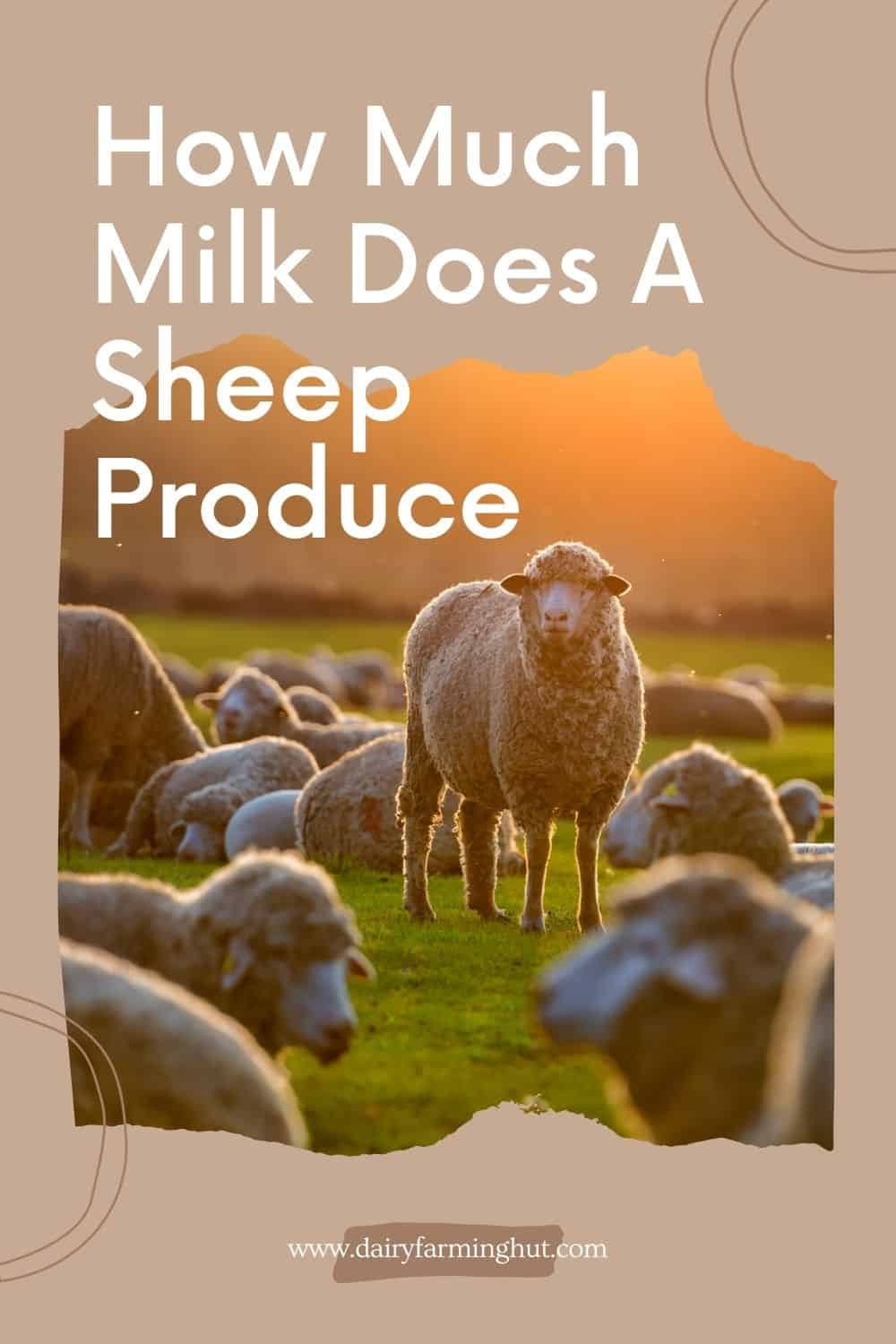
How Much Milk Can A Sheep Produce?
The amount of milk that a sheep produces depends somewhat on certain factors like the breed and the lactation period’s length, but all sheep fall into a general range. The maximum amount of milk that you can obtain from a dairy sheep is 1,100lbs, although most ewes fall around 750lbs for their entire lactation period. (Source: Milkingsheep.com)
Keep in mind that sheep do not start lactating automatically. Lactation is triggered by pregnancy and giving birth to their lambs. You will have to allocate some of the milk they produce to the lambs in order to let the lambs grow and thrive. We address the issues of providing for the lambs while milking your sheep in a section further down.
Lactation Period of the Sheep
The lactation period is a measurement of how long the ewe produces milk. For most dairy sheep, that period is approximately eight months. However, a savvy dairy farmer will not milk the sheep for that entire period. Typically, dairy farmers will milk their sheep for between five and six months of that lactation period.
Non-dairy sheep, on the other hand, have much shorter lactation periods. Their lactation periods last between three to five months. These sheep only produce between 100-200 lbs of milk during their entire lactation period. Although non-dairy sheep are fine for other sheep farmers, they are not desirable for long-term sheep milking.
Naturally, sheep prefer to breed in the fall and give birth in the spring. The lamb’s prevalence as a symbol of Easter and other spring holidays can help you remember that ewes will usually start their lactation period in the spring, around March or April. Sheep farmers may use drugs to enable ewes to become pregnant anytime during the year, however.
Common Dairy Breeds of Sheep
Because people have been milking sheep for centuries longer than cows, we have had the time to breed certain sheep to have longer lactation periods and deliver more milk than other types. In the United States, there are only a few breeds of dairy sheep available for purchase. These breeds include:

Lacaune sheep are commonly used in France for making their Roquefort cheese

East Friesian, originally from Germany

Awassi, originally from Israel
Of these breeds, the East Friesian is the most common in the United States. Its common appearance is because it has a long lactation period and averages around 1,000 pounds of milk per lactation period. This is extremely beneficial for sheep farmers who want to produce cheeses or creams from the milk.
How Often Do Sheep Need To Be Milked
If you milk a sheep by hand, you will likely need to milk a ewe twice a day. Specialized machines for milking are typically more efficient than milking by hand, so ewes are only hooked up for milking once a day.

Sheep getting milked with machine
You might notice that the sheep fluctuates during the lactation period so that some days you receive more milk than others.
Can You Milk A Sheep While It Is Nursing?
Dairy sheep farmers can decide how they want to set up the system to ensure that the lambs receive an adequate amount of their mother’s milk. Some farmers prefer to let the lambs nurse for the majority of the day but keep the lamb in a separate enclosure during the night so that the farmer can milk the ewe in the morning before returning the lamb and repeating the cycle.
Looking for Shearing Machine for your Sheep?
Check best Sheep Shearing Machines under $200
Other farmers prefer to wait until a lamb is weaned before starting the milking process. A lamb typically weans between one and two months after birth. Although that month or two cuts into the lactation period, a farmer can immediately start milking the sheep twice per day and making up for the lost time.
One method is not more effective than the other, so it comes down to the farmer's preference. For farmers who would rather have some milk throughout the entire lactation period, it is worth separating the lambs overnight and milk in the morning. That method may also lead to faster weaning of the lamb.
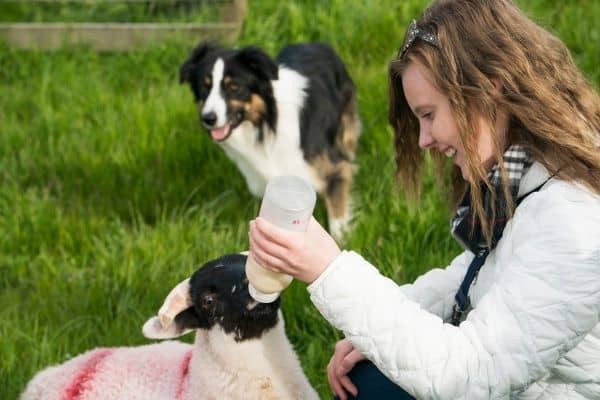
The most efficient method would be to take the lamb away from the ewe one day after birth and raise it entirely on artificial milk instead of letting it nurse at all from its mother, but sheep farmers rarely adopt that method. It might lead to a weaker lamb that does not receive all of the antibodies it would need to thrive and grow.
How Do You Milk A Sheep?
Depending on the number of sheep who are lactating at any one time, you can choose to milk your sheep by hand or by using specialized machinery.
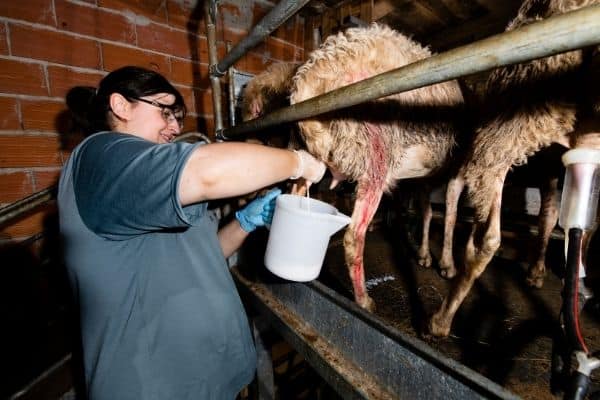
Milking sheep by hand
Dairy sheep farms often have massive herds, all lactating simultaneously, requiring machinery to speed up the milking process. For homesteaders or non-commercial farmers, sheep are easy-going enough to be milked by hand.
Popular Sheep Milk Products
As with other types of milk, there is a variety of products that sheep farmers can make from their sheep’s milk.
However, cheese is the most popular sheep milk product because the higher solids content in sheep milk makes it more efficient for cheese making.
You can make a lot of cheese from a small amount of sheep milk, which is different from other species’ milk.
Around 10% of a single gallon of cow milk can be converted into cheese. In comparison, 18%-25% of a single gallon of sheep milk can be converted into cheese. Cheese connoisseurs would argue that the cheeses made from sheep milk are different enough from cow or goat cheeses and that sheep milk is not inherently superior, but it is more cost-efficient.
Most dairy sheep farmers freeze their sheep milk until they are ready to turn it into cheese for convenience. Unlike some species’ milk, sheep milk does not lose the ability to become cheese after being frozen for an extended period of time. Typical sheep cheeses from around the world include:
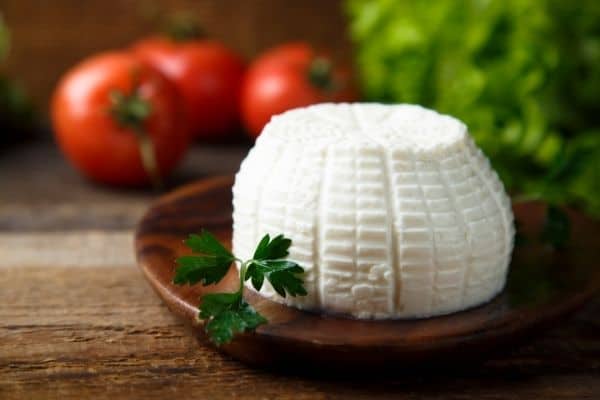
Ricotta from Italy
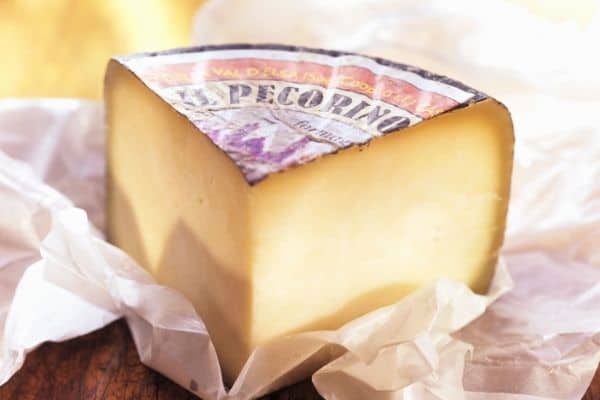
Pecorino Romano from Italy

Feta from Italy, France, and Greece
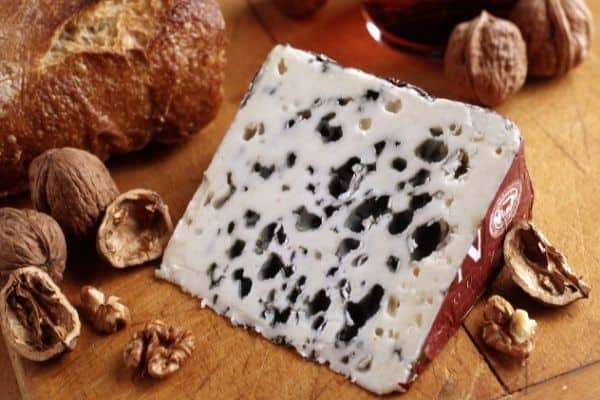
Roquefort from France
In addition to cheeses, most people use sheep milk for making yogurt, ice cream, or butter. Because sheep milk is thick and chunky, people tend to shy away from drinking it in milk form, even after being refrigerated.
Despite that, sheep milk is often quite expensive. It can sell for quadruple what the same amount of cow milk would go for in some places.
In Conclusion
Sheep farming can be somewhat complicated to get started in, but knowing how much milk you could reasonably expect from a ewe and how long to milk her is a fantastic start. Before you know it, you will be on your way to enjoying fantastic cheeses and butter that will be homemade from your herd.
